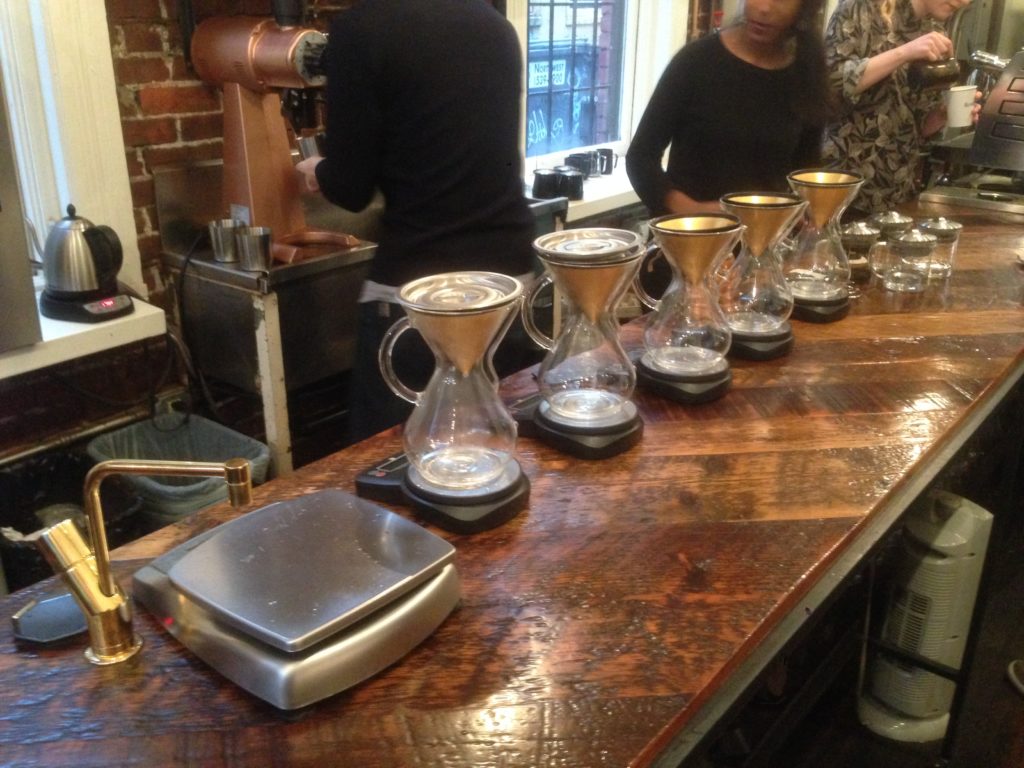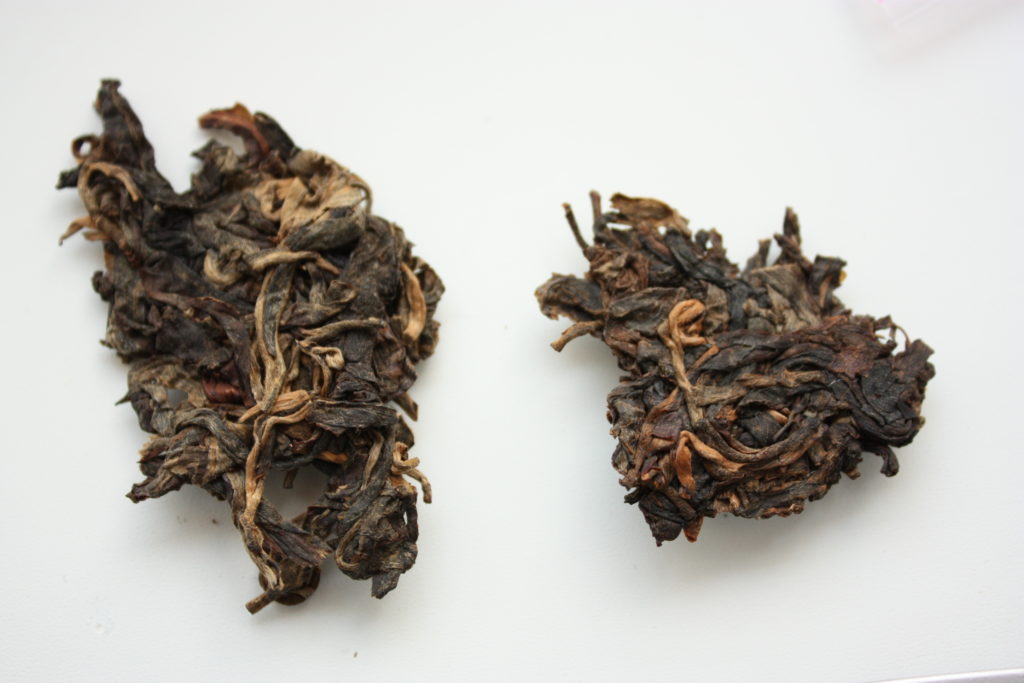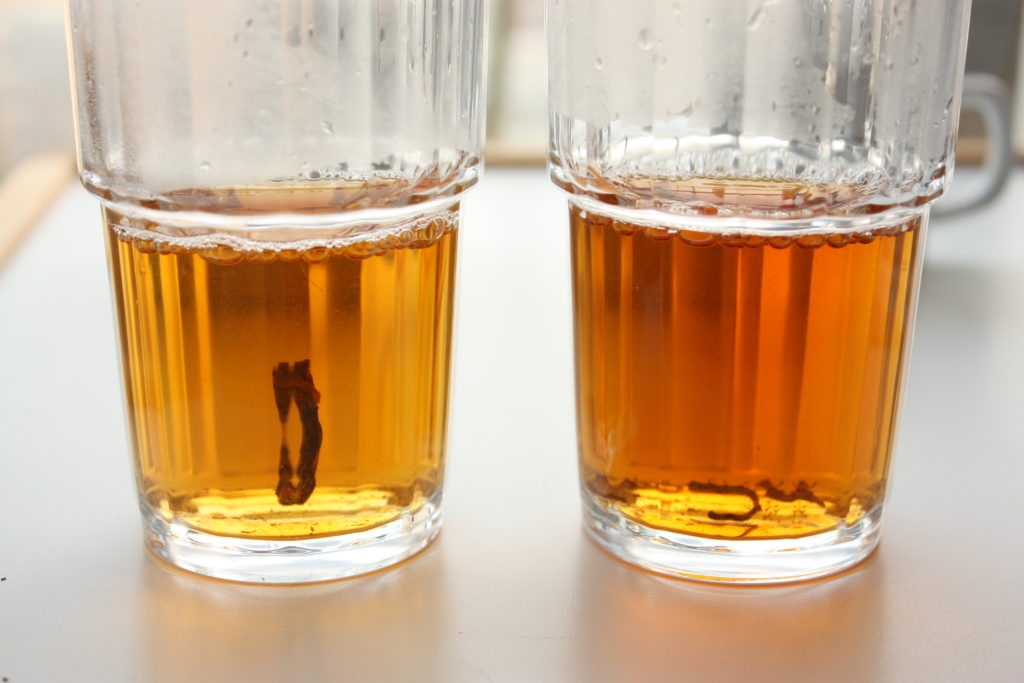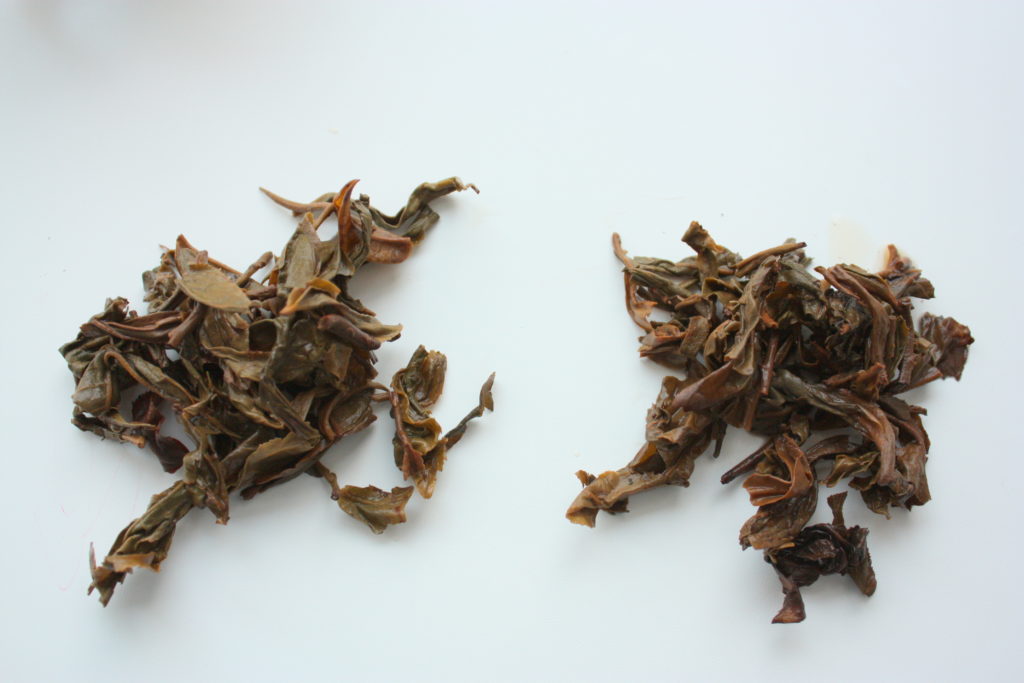Time passes of course, and every time you make tea you have to consider that passage of time. Unless you’re making some abomination like instant tea powder, the amount of time you allow the leaves to interact with the water changes what your cup will taste like. Unlike coffee, which has many ways of brewing that more or less take time out of the equation (hello drip coffee), tea usually asks you to pay attention or you can suffer a nasty cup of astringency, especially if you’re dealing with run of the mill teabags. So controlling time has always been an important part of tea making.
 One way to do it of course is to use timers. These guys at Revolver in Vancouver, typical of many coffee joints, do it with timers (and cups that leave no space for tea leaves to move – you see them behind the chemex, but that’s another matter). I didn’t watch them for hours, so I don’t know if they make adjustments for different kinds of tea. A tightly rolled Taiwanese oolong would need probably 10 seconds to just open up, whereas a black tea will be well on its way to bitterness by then. In a cafe setting, you only get to drink once, so if it was screwed up, it’s over. Getting it to be palatable without under or overbrewing is very important. I can see why a cafe that brews the tea for you will need a timer.
One way to do it of course is to use timers. These guys at Revolver in Vancouver, typical of many coffee joints, do it with timers (and cups that leave no space for tea leaves to move – you see them behind the chemex, but that’s another matter). I didn’t watch them for hours, so I don’t know if they make adjustments for different kinds of tea. A tightly rolled Taiwanese oolong would need probably 10 seconds to just open up, whereas a black tea will be well on its way to bitterness by then. In a cafe setting, you only get to drink once, so if it was screwed up, it’s over. Getting it to be palatable without under or overbrewing is very important. I can see why a cafe that brews the tea for you will need a timer.
Gongfu method is a little more forgiving – if you mess up one infusion, you can always adjust the next. I find timers distracting and more or less a waste of time in this sort of setting. You only need to know if the last cup was infused too long or too short, and adjust accordingly. Differences of one or two seconds on the timer isn’t going to change much of anything, because there are so many other things that can change as well – the speed you pour, the temperature of your teaware, how long you waited between infusions, etc, that will affect the outcome. I’ve even seen people claiming they need highly precise timers down to the hundredths of a second; that’s just being silly. Timers only get to be useful for tea brewing if you’re measuring something over 30 seconds. Splitting hair won’t help you make better tea.
More than just the immediate question of infusing tea though, tea drinking itself takes time, especially when done gongfu style. The time it takes to drink tea in a session is probably at a minimum 30 minutes. You need time to boil the water, and then drink a good 4-5 infusions; that’s half an hour right there, and that’s if you’re fast and are totally focused on the tea drinking itself. If you want to be doing something else while drinking tea, it can go on forever. When you have a cup of coffee, there’s a natural halflife of how long it can last – if you wait too long, it gets cold, and unless you dunk ice in it, the quality of the brew is gone. So you pretty much are limited by that amount of time, dependent on room temperature and such things. With gongfu style tea brewing and a ready supply of hot water, you can literally go on forever if you’re willing to drink tea flavoured water.
That explains why it’s so hard to find places that provide space for tea brewing in gongfu style. During the tea renaissance in Taiwan in the 70s and 80s there were a lot of these chayiguan, “tea art houses”, but the vast majority of them have died and very few survive with serious tea still being their main focus. In Hong Kong it never became a thing, because a customer will easily sit there for a few hours while paying only one price; here that price needs to be very high or you can’t cover rent. China, funny enough, is the only place that has a bunch of chayiguan, but most of them serve very mediocre teas at an unreasonable price. At the end of the day, none are very good options, and that’s all because tea takes time, easily a lot of it. In that amount of time you can sell a lot more cups of coffee.
I think this is probably why a lot of us, even in Asia, end up drinking at home, often alone. Some would have regular gatherings of friends who share the interest and drink together, at which point time passes pretty quickly as you go from tea to tea and chat about it in the meantime. Otherwise, committing to a couple hours of tea drinking together is not too easy to coordinate. Shops where you can hang out and meet others naturally are rarer still, and require a patient owner who is willing to put up with customers who lull around and not buying much and who can still pay the rent (while often doing the brewing themselves). It’s a difficult environment to survive in. If you have a local shop like that which also doesn’t gouge you for the privilege, cherish it.
While it probably isn’t too likely, here’s hoping that more interesting tea places open, or stay open, during 2015, and that all of you will have new and meaningful experiences with tea in this new year.






Yeah water is really something people don't talk enough about. You sort of settle into your routine and don't think…